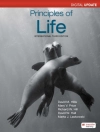My dog understands me! At least, many dog owners think so. New scientific studies actually show that dogs understand a lot about us humans. For example, they can figure out what humans can and cannot see. Some dogs can even distinguish large numbers of toys by name, like Rico, the internationally famous Border collie.
But do dogs also understand our emotions? Can they grasp cause and effect relationships? What fascinates us humans about dogs? Is it only the proverbial ‘puppy dog eyes’ that make dogs look sympathetic? Or is it the fact that these animals have grown very well-attuned to humans and are willing to cooperate with them?
In a total of ten chapters, Juliane Bräuer and Juliane Kaminski present the results of the most important scientific studies of the last twenty years on dog cognition.
Table des matières
Chapter 1: Why dogs?.- Chapter 2: How wolves became dogs.- Chapter 3: Dogs are not wolves.- Chapter 4: What do dogs understand about others?.- Chapter 5 :Do dogs learn by observing others?.- Chapter 6: How do dogs interpret human gestures?.- Chapter 7: Communication between dogs and humans.- Chapter 8: What do dogs know about their environment?.- Chapter 9: When dogs help.- Chapter 10: Looking ahead.
A propos de l’auteur
Juliane Kaminski and Juliane Bräuer have been studying the cognitive abilities of dogs for 20 years. The authors both studied biology, then completed their doctorates at the Max Planck Institute for Evolutionary Anthropology in Leipzig and conducted numerous behavioural studies.
Juliane Kaminski is an assistant professor at the University of Portsmouth, where she heads the Dog Cognition Centre. She is interested in communication between humans and dogs and is co-editor of the book, The social dog: Behaviour and cognition.
Juliane Bräuer heads Dog Studies at the Max Planck Institute for the Science of Human History in Jena. She is interested in what abilities dogs have developed over the course of domestication. She is author of the book, Smarter than we think: What animals are capable of.












